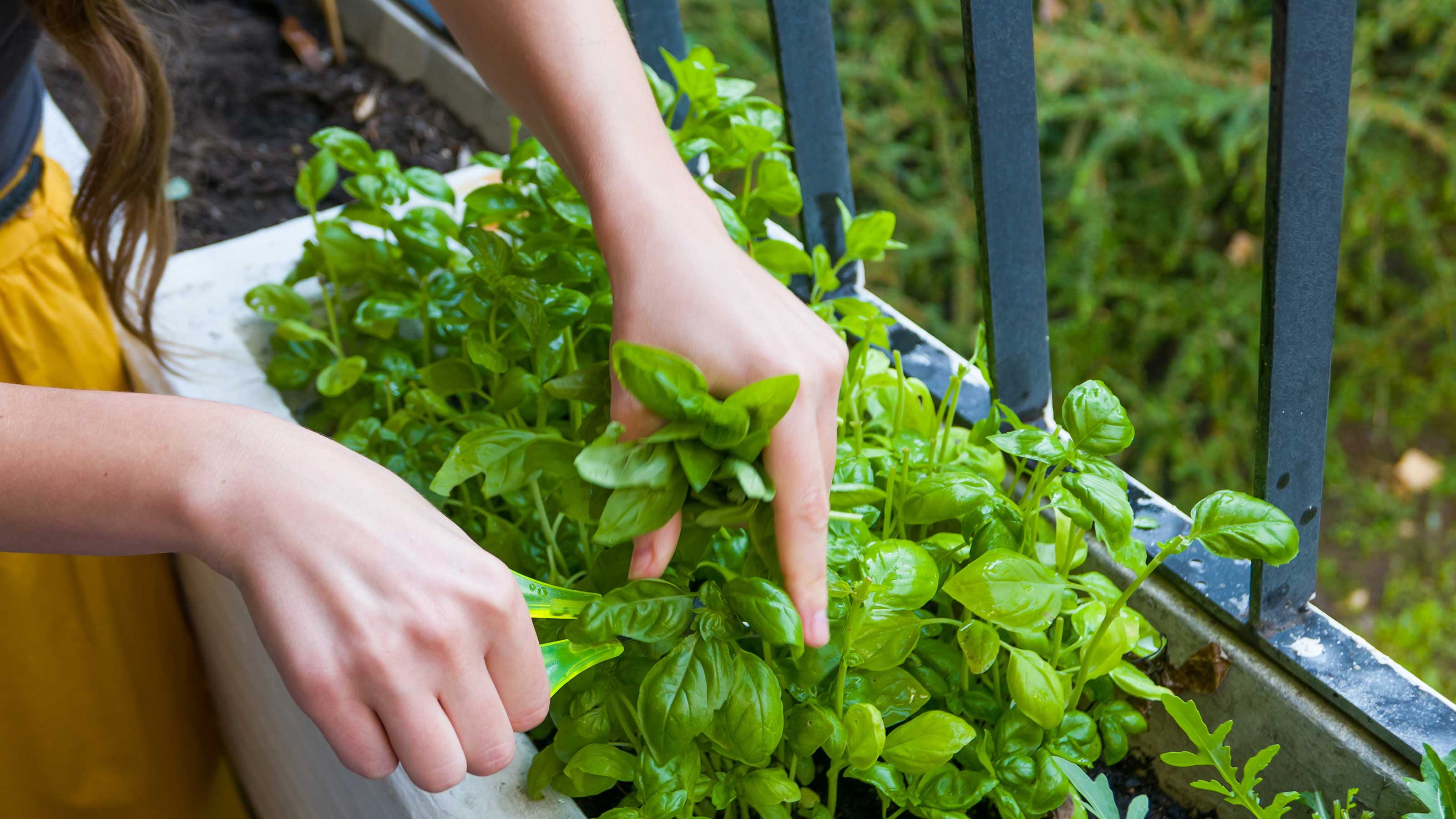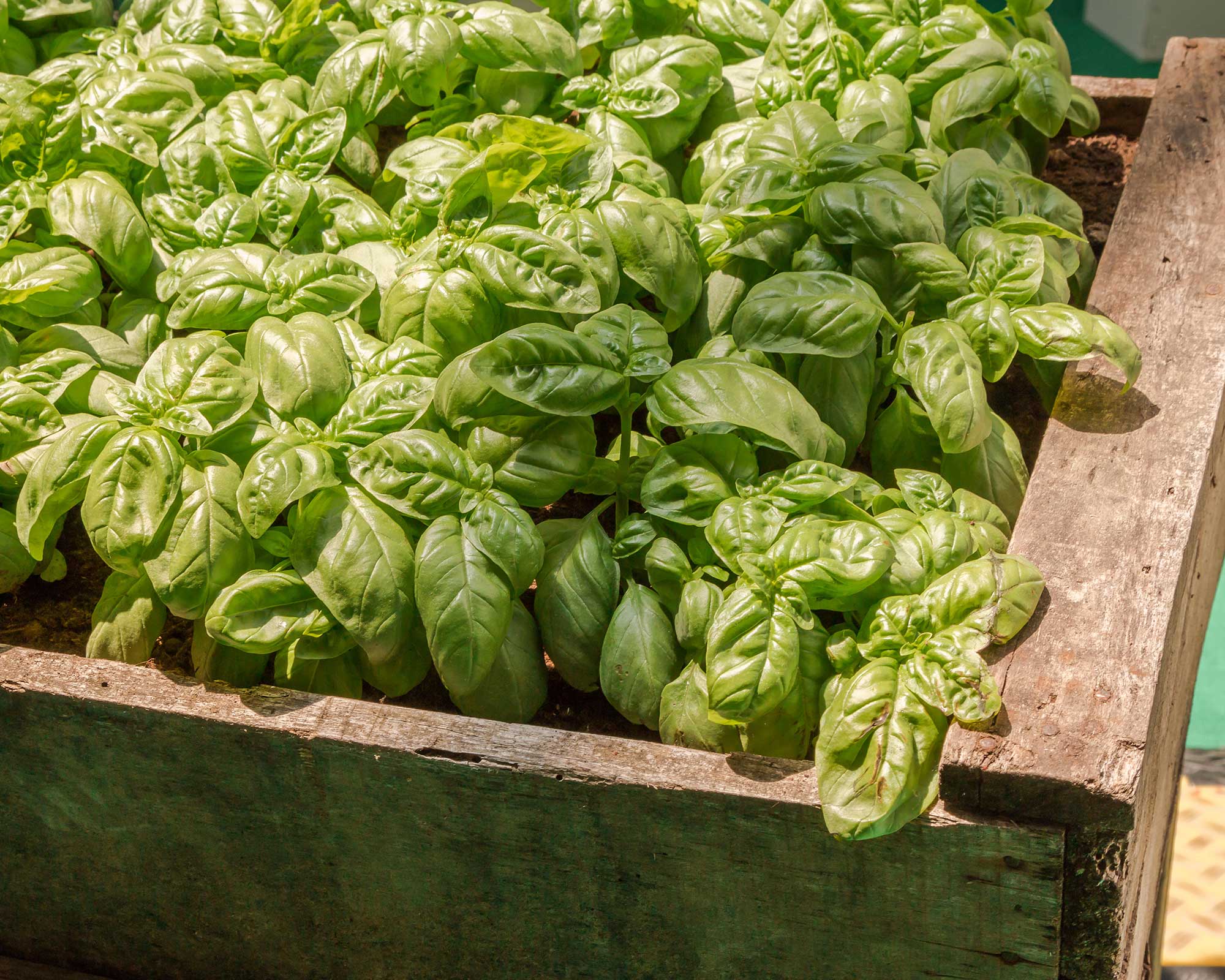Expert reveals how to harvest basil so it keeps growing
Our best tips for how to harvest basil will make your herbs bushier than ever


Knowing how to harvest basil so it keeps growing is the best secret for this kitchen herb staple.
Basil initially grows from its central stem. If you pinch back this stem it will force the plant to branch out, growing more leaves as a result. Doing this process regularly will result in a swathe of healthy new leaves throughout the season.
While it can be grown outdoors too, basil is perfect for growing indoors in your kitchen. Added into pasta, pesto, pizzas and salads, it's an extremely versatile herb and one that's always delicious.

Simple tips for how to harvest basil so it keeps growing
Jo Lambell, founder of Beards and Daisies, says the aim of the basil game is bushy growth. To achieve this, you’ll need to get to know your plant a little better.
'Take a close look at one of its stems and you will see that it has multiple branches of different sizes sprouting from it,' Jo tells us. 'You’ll also see nodes where these branches meet the main stem, often with smaller branches sprouting from them.'
'It's usually the case that the leaves and branches towards the end of the stem are biggest, and these are what we want to pick.'
Jo advises you follow these basil harvesting tips:
- Instead of just snipping off your plant’s leaves, cut the main stem off completely with your best secateurs – about a quarter inch above the nodes, not below. This will allow any smaller branches to grow from the nodes.
- You can then take leaves from the stem you've removed, without causing stress to your plant.
- Always take leaves from the top of the plant, rather than at the bottom. Picking these lower leaves will lead to a thin and straggly plant.
- Trimming back that main stem will also continually tell the plant to grow more, making it bushier in the long run.

When is the right time to harvest basil?
As with all of the best herbs to grow indoors, it's good to know exactly when in the process you can expect to harvest.
Once your basil plant is about 6-8 inches tall, the leaves should be a good size for harvesting. It's actually beneficial for a basil plant to have its leaves harvested regularly, so every time a branch has more than 7 or 8 leaves, you can harvest a few. Picking them in the morning will give the leaves the best taste too!
Don't take more than a third of the entire plant's height in any one harvest either. This is to allow sufficient time for new leaves to form. You should be able to take another harvest in 2-3 weeks.

Should you prune basil once it has flowered?
Where possible, you should avoid allowing your basil plant to flower. Instead, try pruning basil and deadheading when the first signs of flowering arrive – either by pinching off the blooming part, or snipping it cleanly.
If your basil starts bolting, or going to seed, all the plant's energy goes into creating seeds instead of tasty leaves. Unfortunately the basil won't be edible after this point, so it's worth avoiding.


Freelance writer and author Flora Baker is a keen amateur gardener and houseplant enthusiast. Her small garden in South London is a constant work in progress as she gets to grips with snail prevention, DIY trellises and what to plant in shady spots overrun with ivy.
